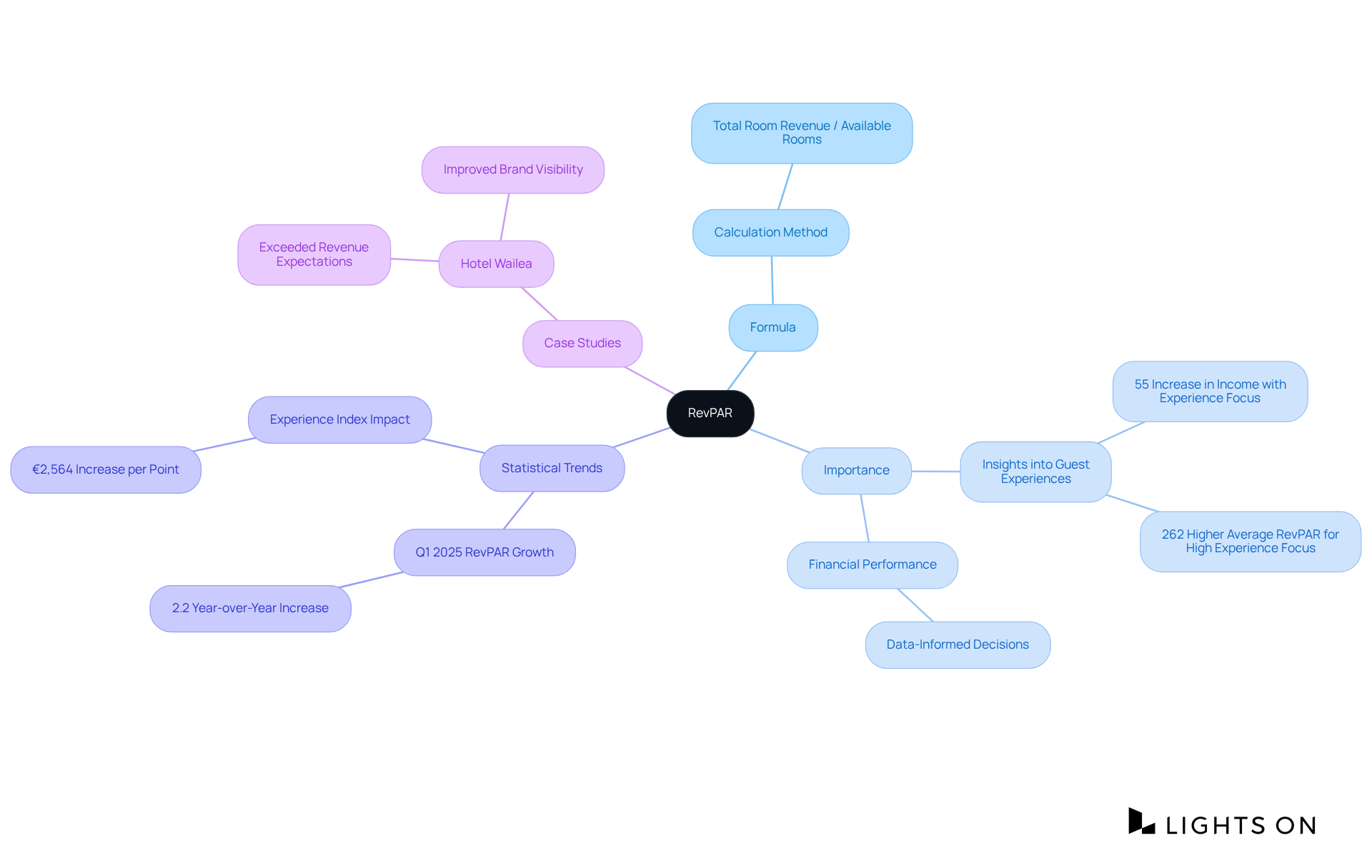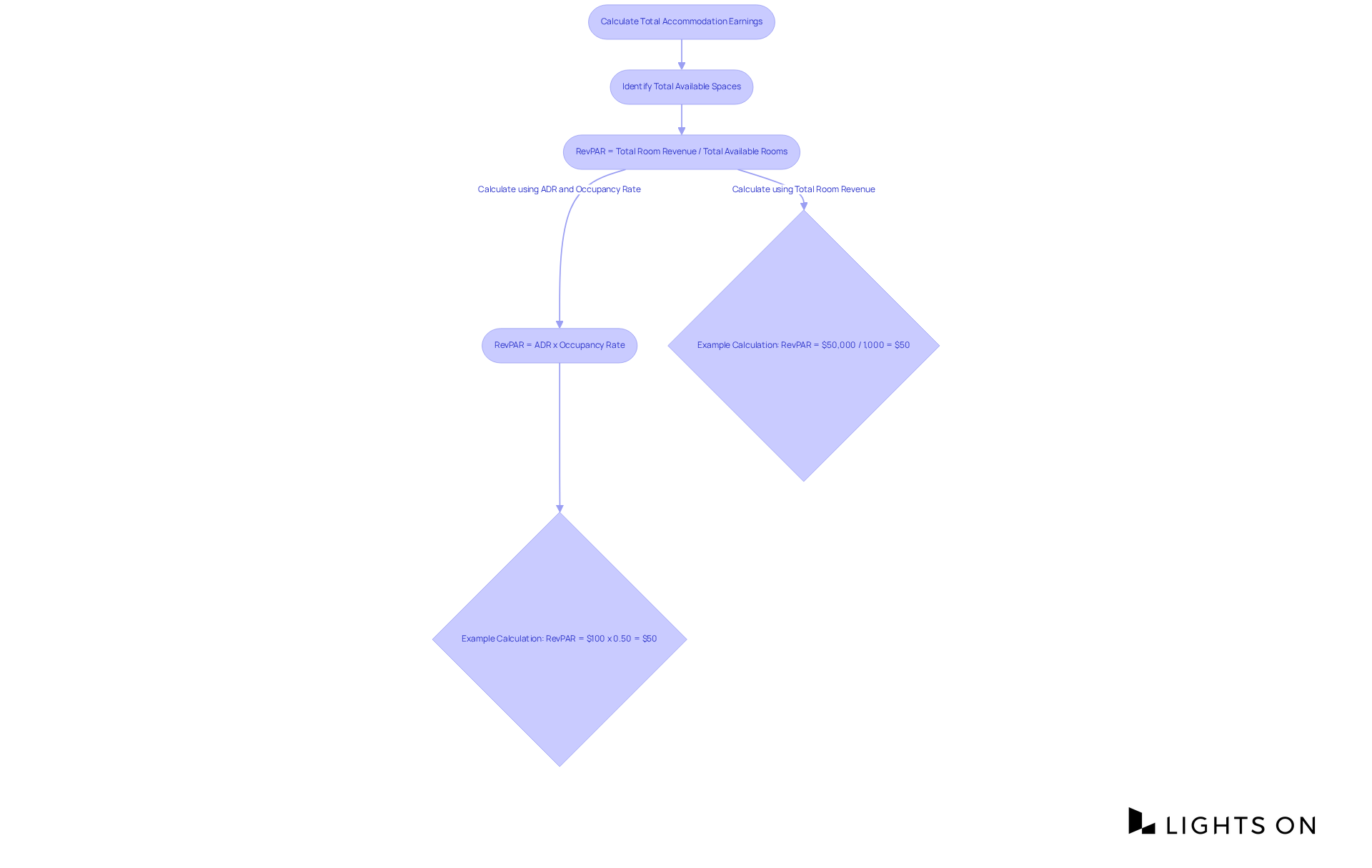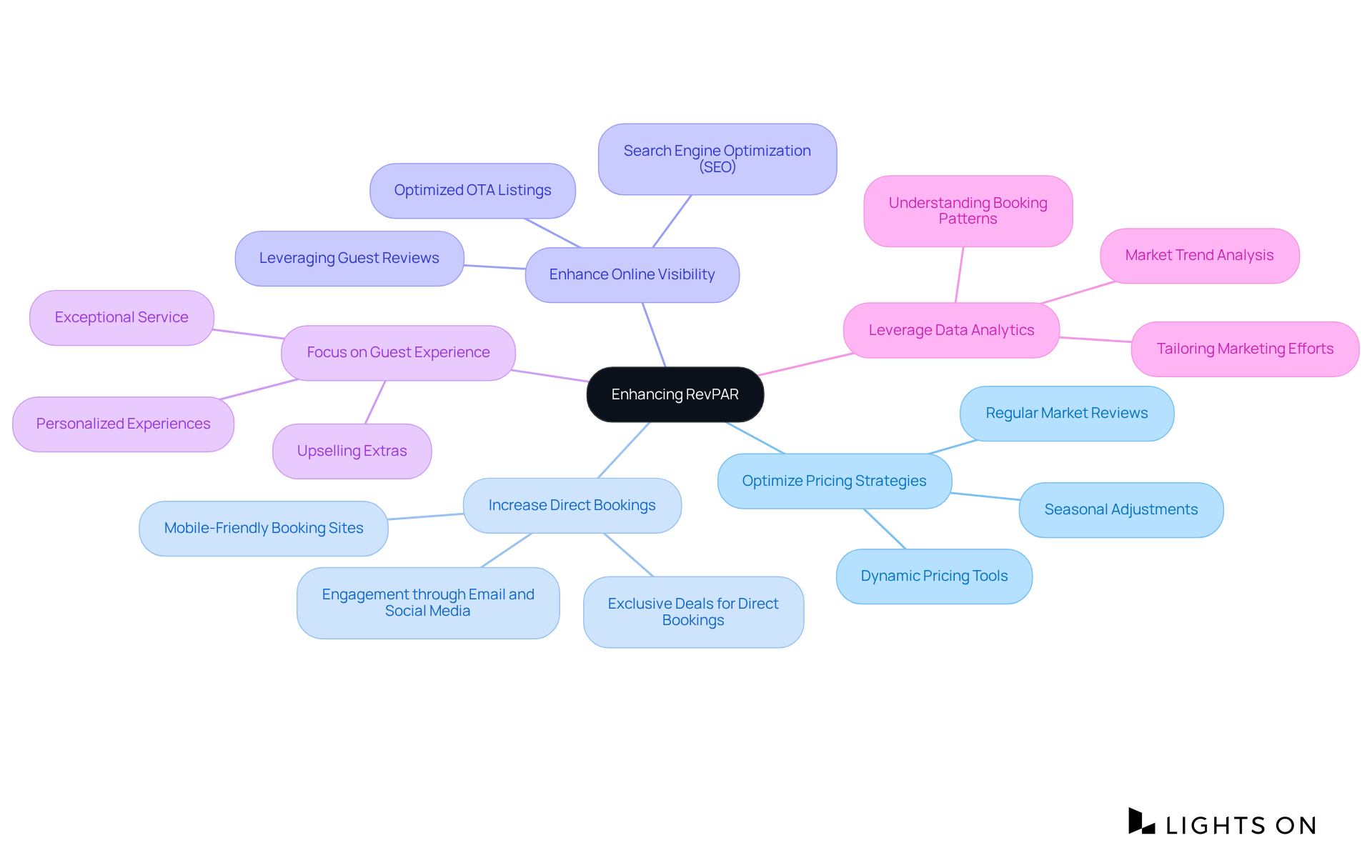This article delves into mastering the calculation of RevPAR (Revenue Per Available Room) and underscores its critical importance within the hospitality industry. RevPAR is calculated by dividing total room revenue by the number of available rooms. Understanding this metric is essential for hotel owners aiming to optimize pricing strategies and enhance financial performance. Data demonstrates a strong correlation between guest experience and revenue growth, highlighting the necessity for industry professionals to prioritize this key performance indicator.
Understanding the intricacies of revenue management is essential for any hotelier aiming to thrive in a competitive market. RevPAR, or Revenue Per Available Room, stands as a crucial metric that not only measures a hotel's financial performance but also reflects its operational efficiency. This article delves into the step-by-step calculation of RevPAR, revealing how hoteliers can leverage this formula to enhance their revenue strategies.
Furthermore, what happens when traditional approaches to maximizing RevPAR meet the evolving expectations of today's guests? Exploring this question will uncover innovative strategies that can redefine success in the hospitality industry.
The formula for revpar is a pivotal metric in the hospitality sector, evaluating an establishment's income-generating efficacy from its available spaces. The formula for revpar is derived by dividing total room revenue by the number of available rooms over a defined timeframe. For lodging proprietors and administrators, understanding the formula for revpar is vital, as it reveals insights into occupancy rates and pricing strategies.
In Q1 2025, U.S. lodging revenue per available room experienced a year-over-year increase of 2.2%, showcasing resilience amid economic uncertainties and competition from alternative accommodations. Notably, establishments that prioritize guest experiences can witness an impressive 55% rise in income per available room. Furthermore, those with a robust focus on experiences achieved an astounding 262% greater average income per available room compared to their counterparts with minimal emphasis, underscoring the correlation between service quality and financial performance.
Moreover, research indicates that for each additional point on the Experience Index, hotels can anticipate an annual average increase of €2,564 in revenue per available room. This underscores the significance of as a driver of profitability. By mastering essential performance metrics, hoteliers can make data-informed decisions that refine financial management practices, ensuring sustained economic performance in a competitive landscape.
Case studies, such as the success of Hotel Wailea, exemplify how a strategic focus on the formula for revpar can lead to exceeding revenue expectations and bolstering brand visibility, highlighting this metric's critical role in the hospitality industry. As Anthony Capuano, CEO of Marriott, aptly noted, 'owners are optimistic about long-term hotel prospects,' highlighting the indispensable role of the formula for revpar in addressing the challenges faced by the industry.

To calculate RevPAR, begin by following these essential steps:
The formula for RevPAR is essential for analyzing hotel revenue performance. Apply the RevPAR Formula: Utilize the following formula:
RevPAR = Total Room Revenue / Total Available Rooms
Alternatively, RevPAR can also be computed using the Average Daily Rate (ADR) and Occupancy Rate:
RevPAR = ADR x Occupancy Rate
For instance, if your hotel generated $50,000 in room revenue and had 1,000 available room nights, the calculation would be:
RevPAR = $50,000 / 1,000 = $50
Conversely, if the ADR is $100 and the occupancy rate is 50%, the calculation would yield:
RevPAR = $100 x 0.50 = $50
Both methods result in the same figure, offering flexibility in your calculation approach.
Understanding is crucial for evaluating your hotel's financial performance. In 2025, the average revenue per available room in the U.S. is projected to be approximately $182.65, reflecting a consistent growth trend in the hospitality sector. This metric not only signifies income efficiency but also facilitates performance comparisons against similar properties. Industry specialists emphasize that efficient income management strategies can significantly enhance earnings per available room, making this a key focus for hotel owners aiming to optimize their financial outcomes. Furthermore, it is vital to recognize that room income per available room should not be viewed in isolation, as it solely accounts for room earnings while neglecting other income sources.

To enhance your RevPAR, consider implementing the following strategies:
By implementing these strategies, you can effectively enhance the formula for RevPAR and drive greater financial success for your hotel.

Mastering the formula for RevPAR is essential for any hotelier aiming to optimize financial performance in a competitive market. This key metric not only evaluates the income efficiency of available rooms but also serves as a vital tool for strategic decision-making. By understanding and applying the RevPAR calculation, hotel operators can gain valuable insights into occupancy rates and pricing strategies that directly impact profitability.
Throughout this article, the significance of RevPAR has been underscored through various insights and case studies. From the step-by-step breakdown of how to calculate RevPAR to the exploration of strategies for enhancing it, the content highlights the importance of focusing on guest experiences, optimizing pricing, and leveraging data analytics. Notably, the correlation between improved guest satisfaction and increased revenue per available room underscores the necessity of prioritizing service quality.
In conclusion, the hospitality industry is continually evolving, and staying ahead requires a proactive approach to financial management. By implementing the strategies discussed—such as optimizing pricing and enhancing online visibility—hoteliers can significantly boost their RevPAR and overall revenue. Embracing these best practices not only leads to improved financial outcomes but also fosters a more satisfying experience for guests, ultimately paving the way for long-term success in the hospitality sector.
What does RevPAR stand for and why is it important in hospitality?
RevPAR stands for Revenue Per Available Room. It is an important metric in the hospitality sector as it evaluates an establishment's income-generating efficiency from its available spaces.
How is RevPAR calculated?
RevPAR is calculated by dividing total room revenue by the number of available rooms over a defined timeframe.
What insights does understanding RevPAR provide to lodging proprietors and administrators?
Understanding RevPAR provides insights into occupancy rates and pricing strategies, which are vital for effective financial management in the hospitality industry.
What was the year-over-year change in U.S. lodging revenue per available room in Q1 2025?
In Q1 2025, U.S. lodging revenue per available room experienced a year-over-year increase of 2.2%.
How does focusing on guest experiences impact income per available room?
Establishments that prioritize guest experiences can see an impressive 55% rise in income per available room and achieve 262% greater average income compared to those with minimal emphasis on experiences.
What is the relationship between the Experience Index and revenue per available room?
Research indicates that for each additional point on the Experience Index, hotels can anticipate an annual average increase of €2,564 in revenue per available room, highlighting the importance of enhancing guest satisfaction for profitability.
Can you provide an example of a hotel that successfully utilized RevPAR strategies?
Hotel Wailea is an example of a hotel that strategically focused on RevPAR, leading to exceeding revenue expectations and bolstering brand visibility.
What did Anthony Capuano, CEO of Marriott, say regarding the long-term prospects of hotels?
Anthony Capuano noted that "owners are optimistic about long-term hotel prospects," emphasizing the critical role of RevPAR in addressing industry challenges.
Transform your group booking strategies with Lights On and watch your occupancy soar.